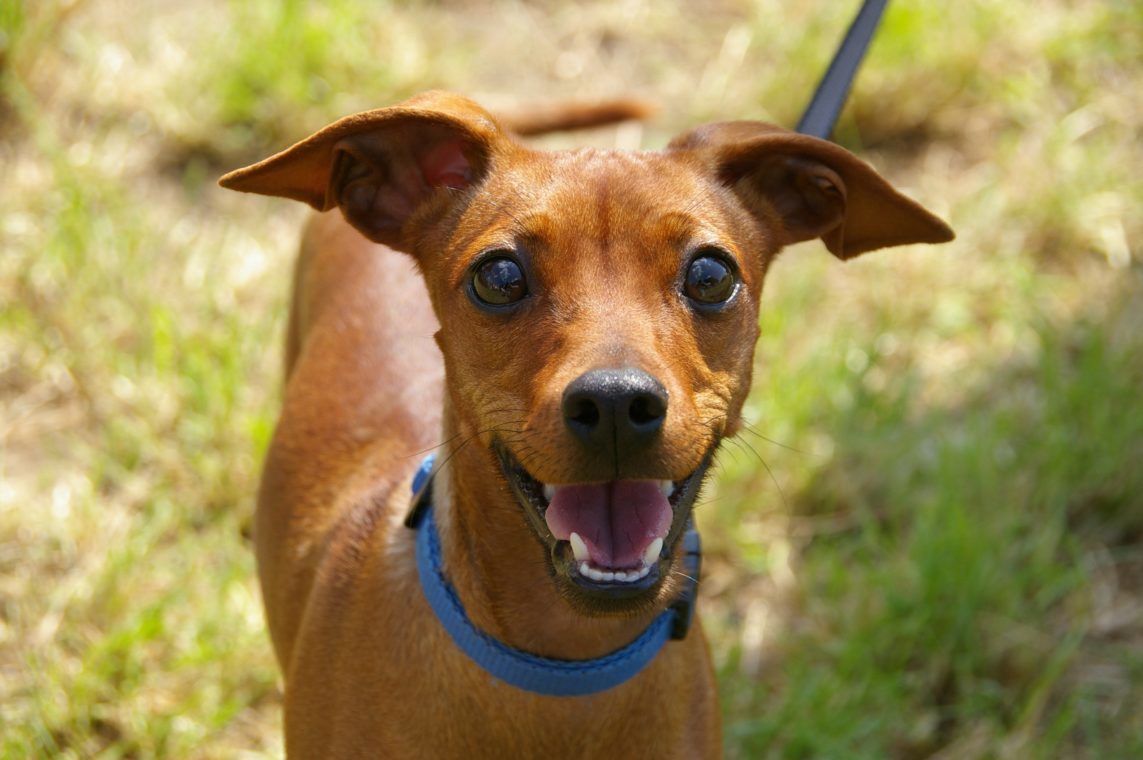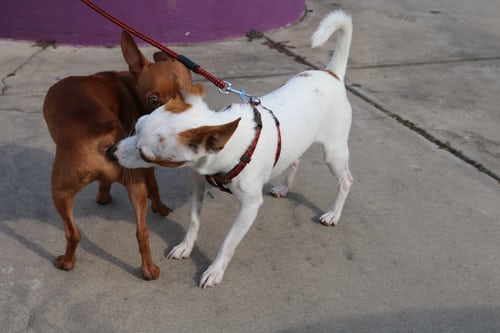Guest Post: The views and opinions expressed in this article are those of the guest author and do not necessarily represent the views of Val Heart & Heart Communications Enterprises Inc.
Does your dog lunge, bark, growl, or strain at the leash when you’re out for a walk?
Embarrassing, isn’t it?
Dangerous even.
A walk with your four-legged companion should be fun. Your outdoor adventures should be a time for bonding and exercise, for both of you.
But if your dog is “leash reactive” those daily walks can be a nightmare.
It’s very important to know that your dog’s bad manners on leash don’t mean you have a bad dog…
In a perfect world, you’d start your new puppy on a consistent training regime using a qualified trainer, and stick with that routine.
You would socialize them properly so they know how to handle all situations appropriately and are well behaved.
But if you’ve got an older dog who didn’t get a good grounding in proper leash manners as a puppy, or you’re working with a rescue from a shelter, all isn’t lost.
Mature dogs can learn new skills with the right communication, consistency, and patience.
Your dog: an angel off-leash, a devil on a tether?
Most dogs with leash reactivity are perfect angels in an off-leash dog park and in their homes. They can happily approach other dogs, greet and sniff, even play with them.
But if you take a moment to study how dogs greet one another off-leash, you’ll get the first clue as to why some dogs act aggressively when meeting another dog or human on the sidewalk when they’re on-leash.
Here’s the thing: Leashes force dogs into an unnatural greeting position.
If you watch two relaxed dogs meet, they nearly always take a curved approach. This allows the dogs to sniff each other’s genitals without approaching head-on.
Head-on, eye-to-eye contact is a sign of aggression in the dog world. So you’ll often see a simultaneous sniff of each other’s backsides.
The glands in a dog’s rear end give off a unique odor that’s specific to them, like a fingerprint.
Once a dog has established the scent and identity of their new friend, they’ll either move on, or one of the dogs will initiate a “play bow” and – possibly – a game will ensue.
A healthy, sound dog doesn’t want to fight… it’s not in their nature.
So if your dog is acting aggressively when on-leash, you have some work to do…
Most aggressive dogs really don’t want to fight
One of the hallmarks of leash reactivity is the need to signal the intention for peace…which, oddly, requires a display of aggression.
If your dog barks or snarls when meeting another dog head-on, it’s their – inappropriate but natural – way of saying, “Stand back! I don’t want to fight you, but I will!”
On-leash dogs who haven’t been trained properly see their tether as a handicap to defending themselves and the human holding the leash.
They know that their movements will be restricted, they feel defensive and vulnerable, and they lash out as a preemptive strike.
Somebody has to be top dog and somebody will be a follower.
Who will it be? That’s the question every dog meet and greet encounter needs to find out, quickly.
So first off, they try to establish dominance as a defense mechanism.
Negative words will just invoke negative behaviors from your dog
It’s our natural – but inappropriate – tendency to admonish our dogs when they lash out. We scold them, sometimes even pull the leash tighter.
This simply escalates the situation.
Your dog is already in a high state of anxiety from a threat they can’t assess.
They’ve met another dog head-on, not curved nose-to-butt – and they sense your tension.
Confused, nervous, and vulnerable, things just get worse.
And now you’re angry with them. The confusion and anxiety are compounded.
What have you taught your dog?
They were scared, you got angry.
A situation that they sensed might be dangerous just resulted in their human becoming upset with them.
Now, they can’t assess the perceived threat from the other dog and they can’t trust you, either.
3 Quick tips for preventing leash reactivity – short term and long term
So, you’ve got some work to do with your dog. Their leash reactivity is a serious problem.
Here are some strategies to use short term, and some actions you can take in the long term to fix a very manageable problem.
1. Get a high-quality, durable harness.
Your dog is already struggling with their emotions, don’t make them suffer physically, too. A good quality harness will ease their physical discomfort while you’re trying to hold them back from starting a fight.
Poor quality collars and leashes can cause severe neck, spine, and windpipe damage, adding to the trauma of their fear.
If they’re very anxious and have attempted to bite another dog, you’ll need to find a good quality muzzle, too. That way you can both relax while you sort this out.
2. Teach your dog that new friends are fun through clear communication.
Take your dog to an open park so they won’t be startled by another dog or human:
-
-
- When they see another dog, praise them with a treat, then walk in the other direction with them.
- As your dog relaxes, give them praise and a treat when they see another dog and automatically look at you.
- Finally, give your dog a slack leash when meeting another dog. Praise and give them a treat when they look to you for signals.
-
3. Guard your dog’s safety.
It’s nice to think of owning a dog who obediently and respectfully greets every other dog and person in the park when you’re out for your daily walk. But it’s your job to shelter them from potentially stressful situations when they’re learning how to shed their leash reactivity and relax.
This might mean telling another dog owner to give you space, or turning back if you’re on a narrow trail and faced with meeting another dog head-on.
Respect your dog’s need for security and assurance. This will be a long process, but it’s worth the effort, no matter how young or how old your fur baby might be…
Make sure you cover all the angles when dealing with leash reactivity
If your dog is acting out on a leash, it’s probably a natural reaction to a phobia or lack of training. But sometimes dogs can act out because they’re suffering from serious health issues.
If your dog is suddenly aggressive or isn’t responding to your patient and persistent training, they might need to have a conversation with a pet communicator or be assessed by a veterinarian.
There are many neurological conditions that manifest as poor behavior, including the brain, thyroid, and adrenal disorders. They can only be diagnosed by a professional.
Do you want to learn how to decode your dog’s leash reactivity and other challenging behavior patterns? We’re here to help, whether we work with your furry companion or teach you how to communicate with them, and the other animals in your life.
Contact us, and let’s get started on this journey together.
Did you find this article helpful? Please leave your comment below!
Interested in learning more about your fluffy companions? Have a look at these articles:
CBD Oil for Anxiety: Can it Calm your Anxious Dog?
The Benefits of Leather Dog Collars
Adopting a Shelter Dog: 6 Ways to Bond










Nice article. Read more about Understanding the Difference Between Emotional Support and Service Dogs here https://valheart.com/understanding-the-difference-between-emotional-support-and-service-dogs/